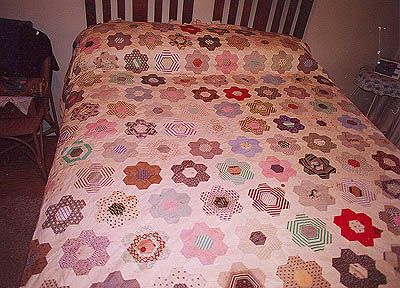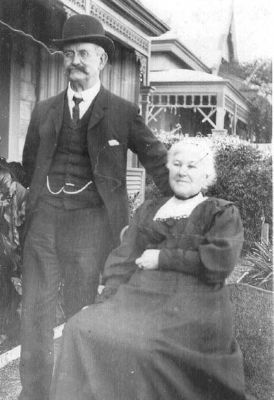Quilt No.989TL - Thelma Lithgow

The quilt top was made by Margaret Clucas in 1882 on the ship 'Potosi' travelling from the Isle of Man to Australia. It was then owned by her daughter, Mona Harvey (born Clucas) and then her grand-daughter Thelma Muriel Mona Lithgow born 1909.
"Margaret Clucas nee Lewin, born Isle of Man 1834, married John Clucas and migrated to Australia via England, travelling on the cargo passenger ship the 'Potosi' 1882. While travelling on the 'Potosi' Margaret made the quilt top but it was never backed. John and Margaret Clucas were both school teachers and were quickly registered in their profession on arrival in St. Australia, Constantly moving around in difficult conditions occupied all their spare time. Hence the quilt was never completed. The hexagon papers were old letters but they have disintegrated over time." [Yvonne Daniel]

Related Quilts:
2135 x 1727mm
2185 x 1372mm
2560 x 2160mm
1630 x 1350mm
2380 x 2320mm
2400 x 1780mm.






